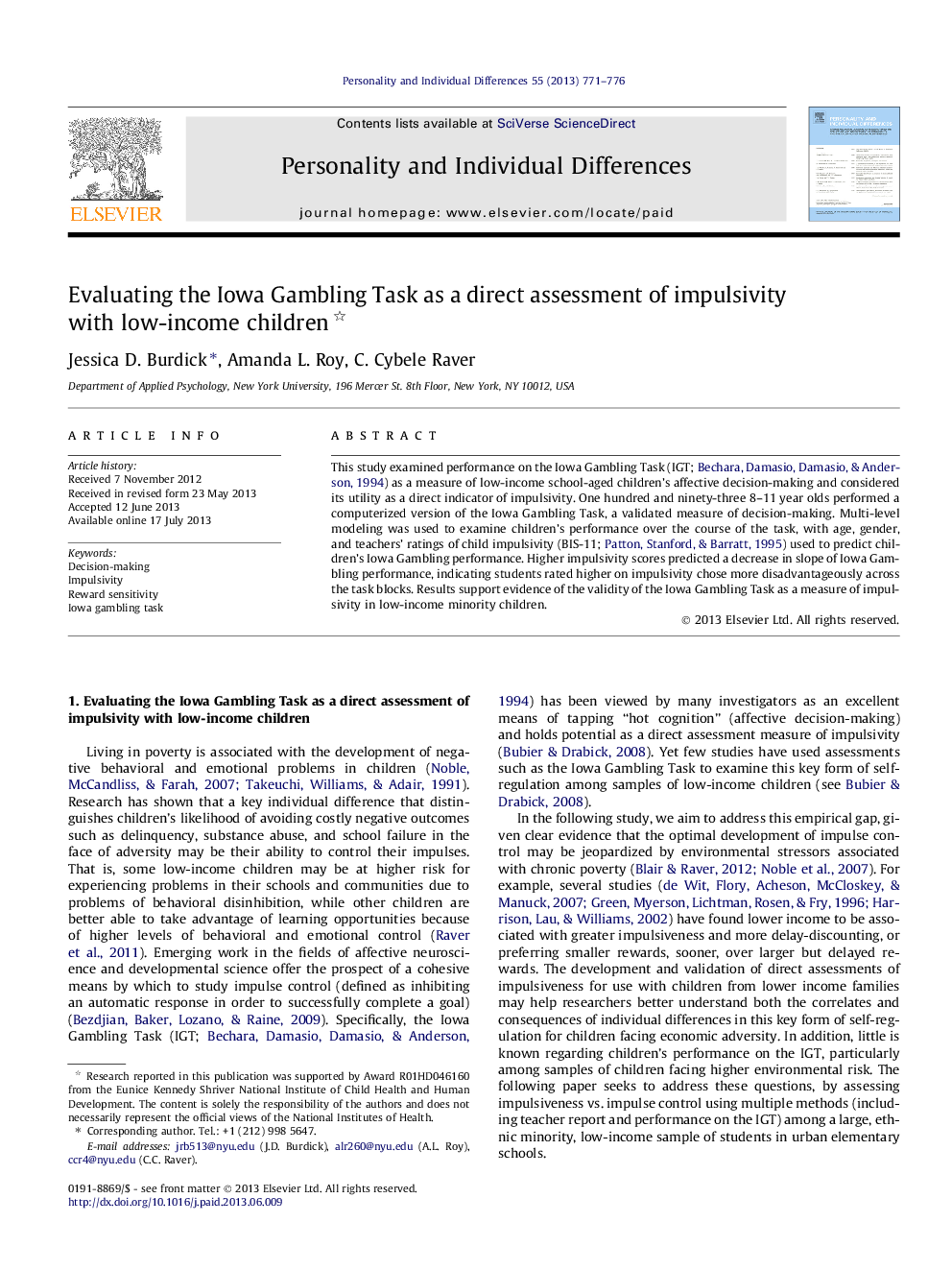| Article ID | Journal | Published Year | Pages | File Type |
|---|---|---|---|---|
| 10440402 | Personality and Individual Differences | 2013 | 6 Pages |
Abstract
This study examined performance on the Iowa Gambling Task (IGT; Bechara, Damasio, Damasio, & Anderson, 1994) as a measure of low-income school-aged children's affective decision-making and considered its utility as a direct indicator of impulsivity. One hundred and ninety-three 8-11Â year olds performed a computerized version of the Iowa Gambling Task, a validated measure of decision-making. Multi-level modeling was used to examine children's performance over the course of the task, with age, gender, and teachers' ratings of child impulsivity (BIS-11; Patton, Stanford, & Barratt, 1995) used to predict children's Iowa Gambling performance. Higher impulsivity scores predicted a decrease in slope of Iowa Gambling performance, indicating students rated higher on impulsivity chose more disadvantageously across the task blocks. Results support evidence of the validity of the Iowa Gambling Task as a measure of impulsivity in low-income minority children.
Related Topics
Life Sciences
Neuroscience
Behavioral Neuroscience
Authors
Jessica D. Burdick, Amanda L. Roy, C. Cybele Raver,
